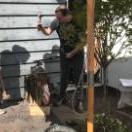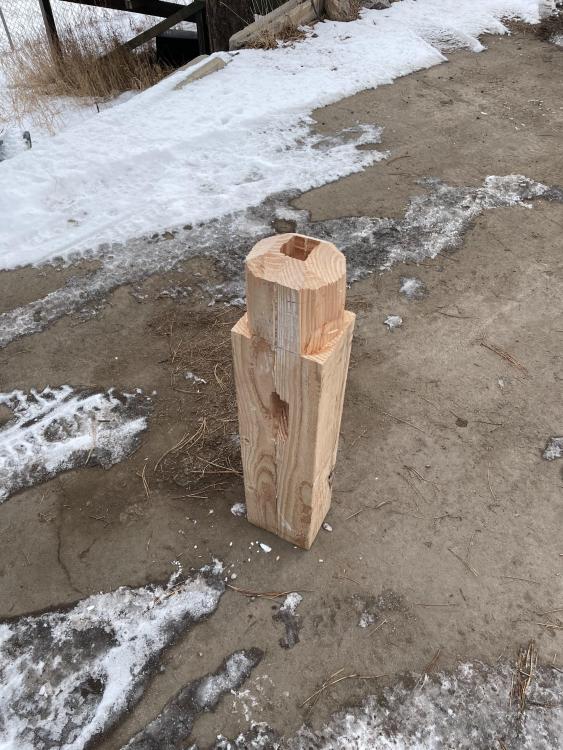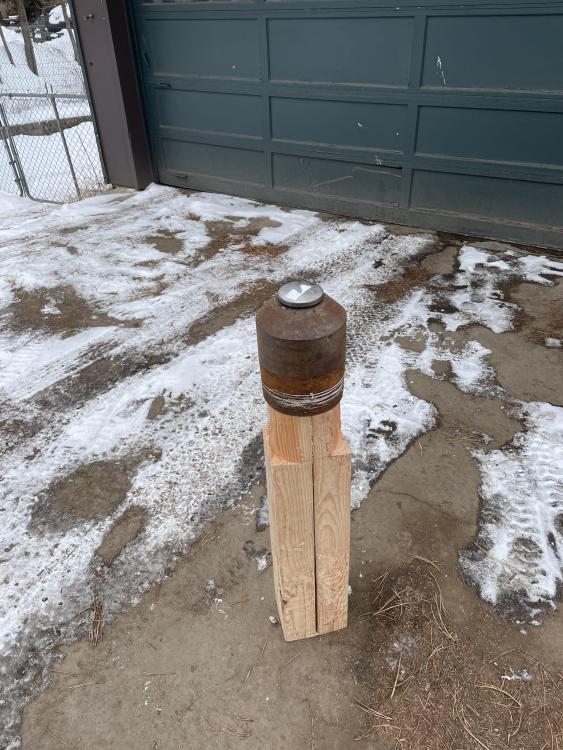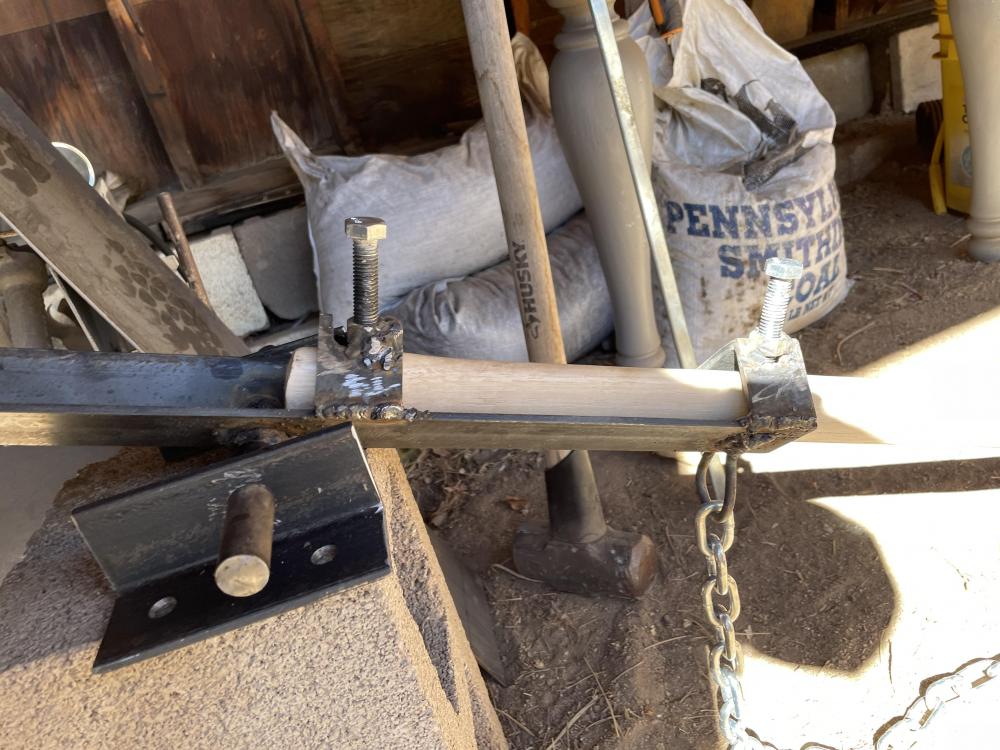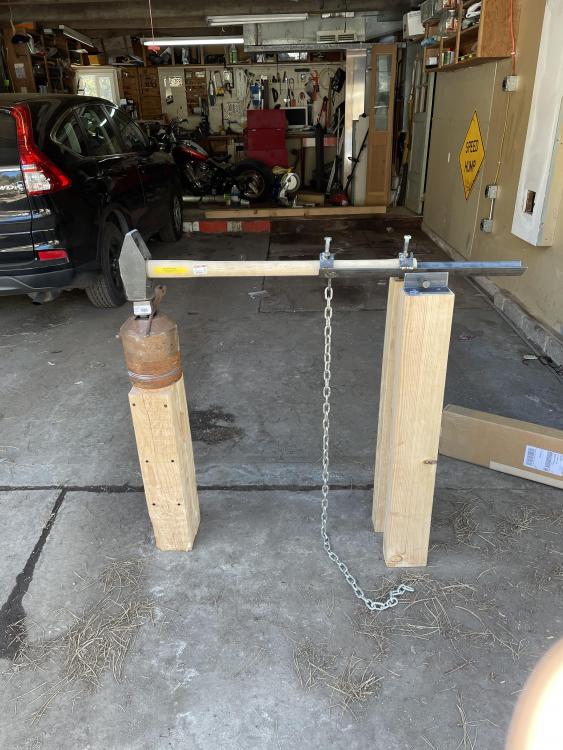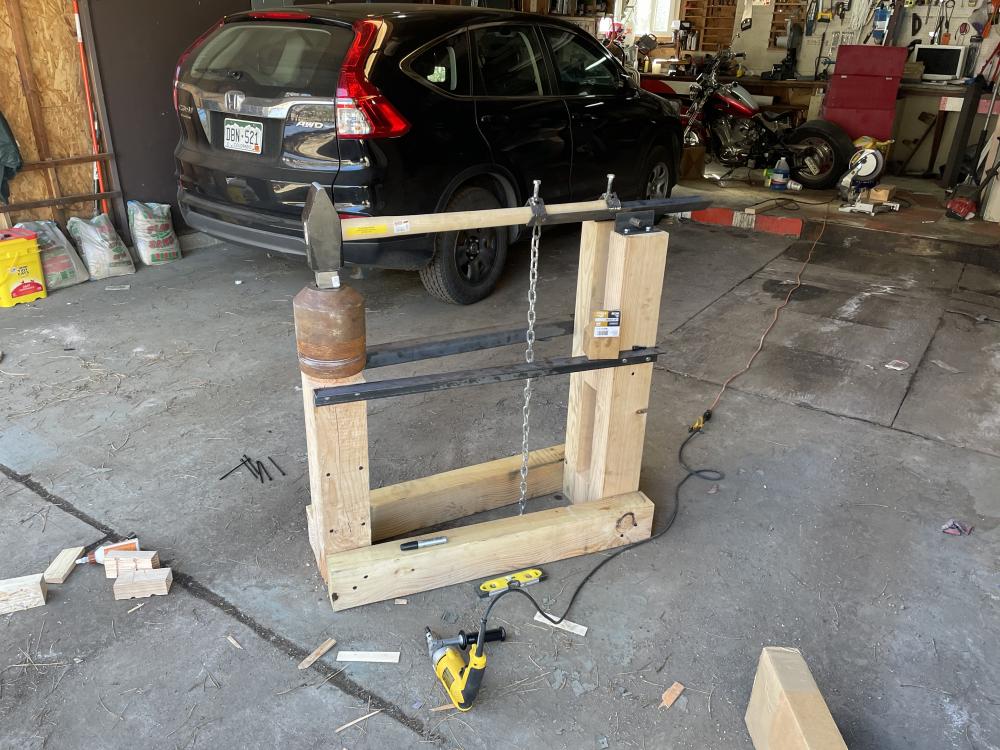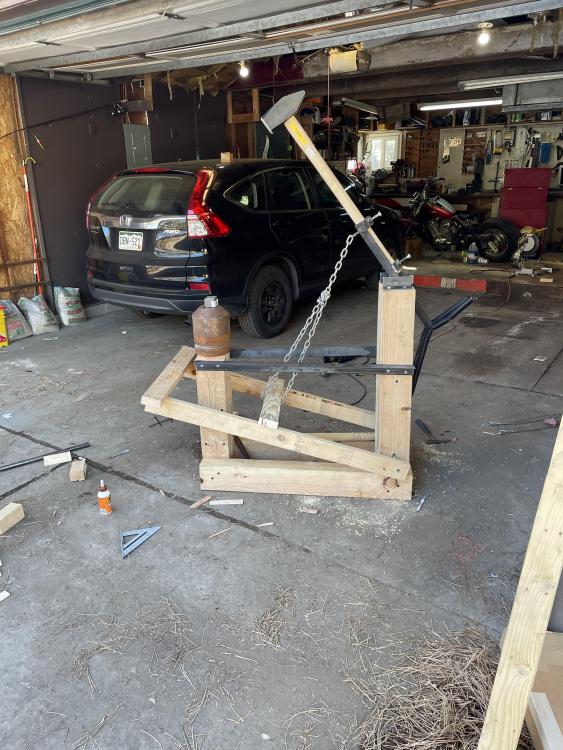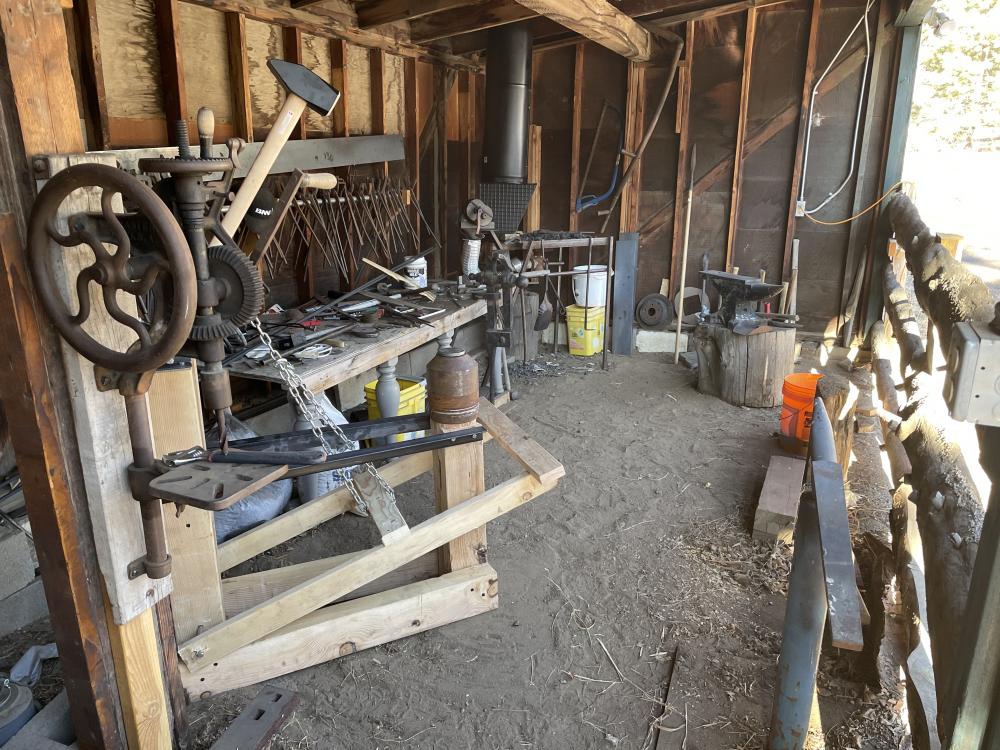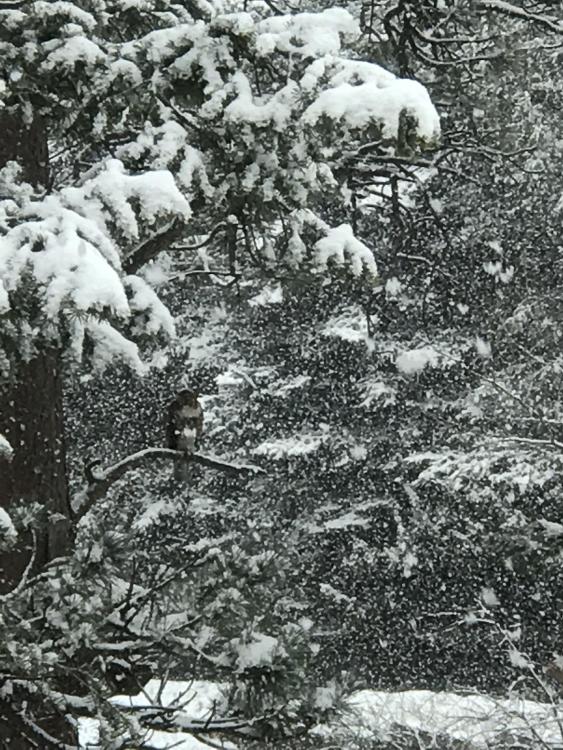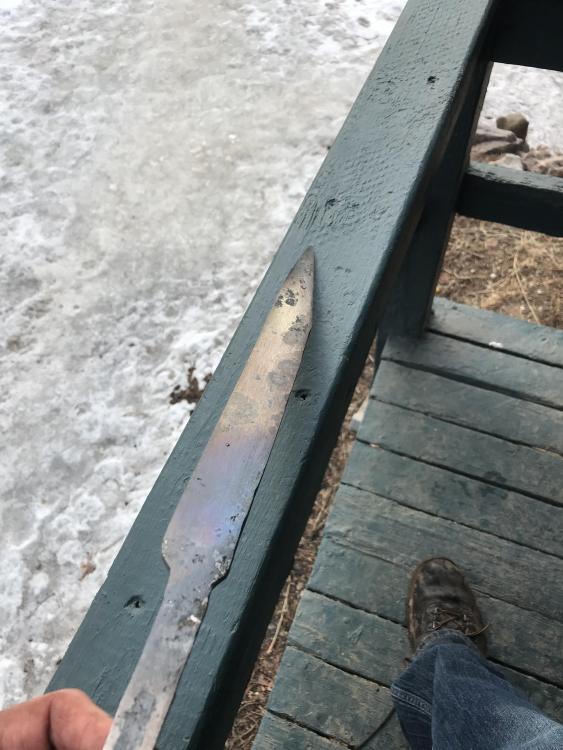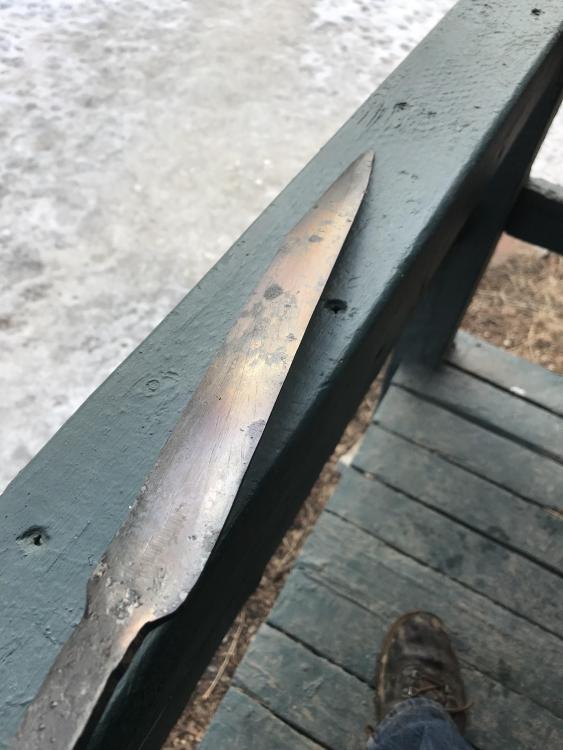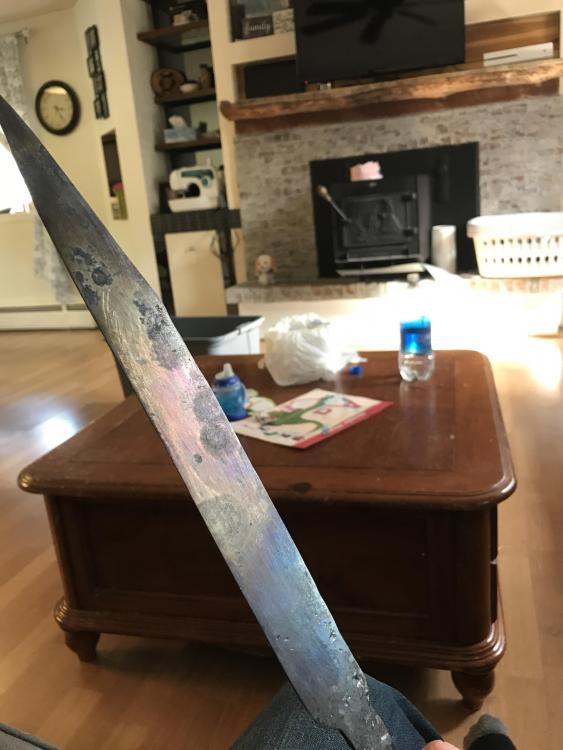
DickyPitts
Members-
Posts
42 -
Joined
-
Last visited
Profile Information
-
Gender
Male
-
Location
Bailey Colorado
Converted
-
Location
Bailey Colorado
Recent Profile Visitors
-
Ideas to Practice Striking
DickyPitts replied to Will Brouwers's topic in Blacksmithing, General Discussion
I like using a wedge and sledge to split wood. If you can consistently hit a 2.5" square wedge end, flat with your sledge face, at whatever angle it winds up at after the last swing, full swing blows at a piece on an anvil are easy. -
Finally built one.
DickyPitts replied to DickyPitts's topic in Power Hammers, Treadle Hammers, Olivers
I’ll keep an eye out for a support for the anvil that isn’t made of wood. The anvil weighs a good bit though, and I’m very happy with the performance I’ve seen so far. I forged down the tang on the sword blank I’m working on in two heats. It’s very much an improvement over working larger stock by hand! IMG_0037.MOV -
Frosty started following DickyPitts
-
I’m not a welder, so my welds are ugly as can be, but they stuck. If I had a wire feed or a torch set my welds would look prettier, but I’m just not that practiced with a stick welder. The hammer has a 17.8 lb head and the springs are a set of 90 lb garage door springs. I didn’t expect there to be two in the box, and that took some experimentation to get the hammer up where I wanted it. I’ve cut in a slot for punch outs to fall through under the anvil which is made from an extra heavy 7” casing bull plug. It weighs over 40 lbs, and I picked it up on a well site doing my day job. The tool hits hard, the chain pull from the treadle allows the hammer to keep Moving on inertia after the treadle bottoms out, which it wouldn’t do if I had built it with a ridged connection. It’s not a grasshopper, but that’s intentional, I’m looking forward to trying to get stuff done with set tools the way it would have been done prior to shops working with electricity. Now it’s time to build some tooling and get the thing working. Thanks for checking out my build. Have a great day!
-
Yep Jerry, it’s been about four or five years now since I gave up nicotine, picked up that habit around the same time I started drinking beer and hanging around women with less than perfect reputations. Smoked for 7 years or so in the Navy and after. I quit a year after I met my wife. I won’t touch it now, don’t even want to anymore. Funny you should mention the sand dunes, I spent a lot of time studying exactly those in reservoir engineering classes for my petroleum engineering degree. They’re really interesting when you see them in central to eastern Utah too. Those dunes are classic reservoir rock and are very useful for showing things like anisotropic behavior, gradational traps, and even the mineralization process that occurs with post deposition fluid movements. Those are key concepts even in the unconventional reservoirs we spend most of our time in now.
-
Spring? Frosty we just barely have buds on the trees. I saw a mom and baby deer knitting sweaters to keep off the chill last week. In all seriousness, it’s beautiful up here in the high country, we had a spring snow storm on Sunday and got to watch a red tailed hawk weathering the storm on a tree branch not 30 feet from the window. I got pictures. Bugger was about a foot and a half tall! Nothing like the seagull...no I mean eagles up there where you are, but a pretty sight none the less. I know picking up heavy stuff sounds silly to you, but I picked up the habit in the navy and haven’t managed to kick it yet. It was easier to quit smoking. In part, I’m doing PT to work out an imbalance, apparently I’ve been doing it wrong for a decade and my shoulders don’t like it. I have to strengthen my rotator cuff to avoid chronic pain. Everyone in Colorado thinks their neighbors are nutty, because we are. The only places I’ve ever been with a higher percentage of fruitcakes per capita than here are LA and Big Lake Alaska!
-
Anyone else do this? I haven’t had time to go to the gym as much as I’d like lately due to work/kids and such. I don’t have any equipment at home to lift, but I do have a lot of rocks and heavy steel tools laying around in my shop. A lot of the old powerlifting routines can be adapted to work with just about any old chunk of heavy stuff as weight, and it takes me 2 min to walk up the hill to my shop instead of half an hour to drive to the gym. I did get some funny looks doing front squats while hugging an anvil, but my neighbors all think I’m nutty anyway.
-
First heat treat in years.
DickyPitts replied to DickyPitts's topic in Heat Treating Knives, Blades etc
JHCC, I read it, I even read it two days ago, prior to posting this thread. Just an example of pre-existing idea bias I guess. I can admit when I’m wrong. -
First heat treat in years.
DickyPitts replied to DickyPitts's topic in Heat Treating Knives, Blades etc
Guess I need to do some more reading. I thought martensite was the formation at critical temperature, and you were “freezing” it in place during the initial quench. I was wrong though. Not my direct area of expertise for sure. -
First heat treat in years.
DickyPitts replied to DickyPitts's topic in Heat Treating Knives, Blades etc
When you consider the challenges to practical metal work through history, it's pretty amazing that anything was produced at all, much less the impressive pieces that are extant today. I imagine a real seax would have likely not been a mono-metal construction since steel was so scarce/valuable. Most of the extant examples I've seen pictures of, appeared to be pattern welded; maybe from a wrought iron back with a steel edge, but I don't know for sure. I hear the silica in wrought iron makes it a lot stickier when you try to weld it. I've had minimal success with forge welds using mild steel. It's that experience thing again. Next time I'm going to try to file or grind my scarf to clean metal before I try to weld it, I must not be getting the surface clean enough with a wire brush. Olive oil boils at ~ 375 deg F at atmospheric, local pressure is around 11.3-11.4 psia at my altitude which would theoretically lower the boiling temperature. I can't find a latent heat of vaporization figure for olive oil so I'm not sure the exact amount it'll reduce the numerical value, but the idea does illustrate how a lighter oil could have been used to temper a piece. It also got me thinking about how the quench works from a physics standpoint. I guess the idea would be to try to remove heat at a fast enough rate to preserve some of the martensite crystalline structure, while allowing some interstitial carbon to migrate out and relieve stress and prevent shattering, the trick would be getting the heat transfer rate correct. When people bake their metal at ~360-375 deg F for an hour, does the time factor alter the tempering as opposed to bringing a portion of the piece to the point where carbon starts to migrate and then immediately quenching it? I wonder if more carbon migration or crystal phase change occurs during an hours's heat cycle vs the minutes to seconds needed to do a heat & quench style tempering. -
First heat treat in years.
DickyPitts replied to DickyPitts's topic in Heat Treating Knives, Blades etc
Steve, Thomas, Thank you for your response. It’s supposed to be a seax, so I would like to make it durable enough for camp use, shaving firewood, chopping brush, limbing small branches and trees etc. A file bites the edge just a bit, but doesn’t skitter off like it does on the bit of tang I didn’t wind up getting hot enough to temper. I’m going to have to anneal it and try again I think. Ah well, little more file work, now I know that tempering doesn’t scale up anywhere near as bad as getting the piece to forging heat. Thank you for the oven suggestion, I was wondering why people were posting about putting knives in the oven at 350 for hours, getting enough of a temper to prevent shattering prior to finishing sounds like good insurance. I had read about tempering tongs, just had forgotten. Thanks for the reminder, I might even have a pair lying around that have enough mass to get the job done already. Either way I have plenty of junk tongs laying around to play with. 1. Even temper via oven, I’ll probably do this for safety if nothing else, would there have been a primitive method (like hot tongs) to get a consistent temper, or would it have just been a matter of experience? 2. Hot tong the spine after getting the whole piece to a consistent straw yellow to brown, as was the expected temper color for medium carbon steel at 360 deg from on line. I’ve got an idea of where to go next, thanks! -
First heat treat in years.
DickyPitts replied to DickyPitts's topic in Heat Treating Knives, Blades etc
Frosty! Great to hear from you man. We’re all doing great, have another baby girl about the same age now as my oldest was when you met her. I’m graduated and working as an engineer now and life is great! We move to a bigger house, still in the mountains and a lot closer to Denver. Leah, my wife is thrilled since it’s a 1940’s log cabin, and as an architect, it appeals to her aesthetic sense. My email hasn’t changed, it’s still the DickyPitts one. Shoot me whatever you’re using currently and I’ll send along some pics. How’s Deb? -
First heat treat in years.
DickyPitts replied to DickyPitts's topic in Heat Treating Knives, Blades etc
An update so I don’t sound like I didn’t do my research, I was attempting to replicate primitive methods to an extent. Files, forge, quench oil and time are my tools for this project. If it doesn’t come out well, no harm done. I’ve wasted nothing but my time and I’ll have learned something. Those of you using tempering ovens, or simply tempering in the oven, are you attempting a differential heat treat, or are you trying to get consistent properties throughout the piece? Seems like a larger piece would benefit from a softer spine and a harder edge. -
I’ve been building my first larger blade (at least the first one I actually intend to complete) and I’ve just finished my first heat treat outside of punches and chisels in over a decade. This is 5160 from a new coil spring, forged in bevels and done entirely by hand. I don’t have a grinder that is up to the task, so I’m doing it the hard way. Any advise is appreciated. I was attempting to reach a blue spine with a straw to brown along the edge, I did better than I expected using a heated bar to cook the spine. I also attempted to submerge the edge and heat the spine with a torch... I need a new map-gas torch now. Thing was clogged up and didn’t work well at all. My question to you ladies and gentlemen, is this: Is a 5160 blade tempered mostly to a brown or straw brown, with quite a lot of blue near the tang, and the back varying between a brown and purple going to shatter the first time I try to use it for something? What should I be trying to reach color-wise for a medium length 5160 chopper? Thank you everyone.
-
Blacksmithing gems and pearls
DickyPitts replied to Glenn's topic in Blacksmithing, General Discussion
Experience is what you gain immediately after you needed it the most. (Frosty)


